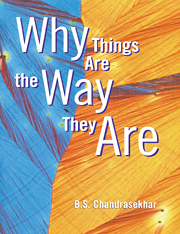Book contents
- Frontmatter
- Contents
- PREFACE
- I INTRODUCTION
- II CRYSTALS
- III PARTICLES AND WAVES
- IV THE ATOM
- V STATISTICAL PHYSICS
- VI THE QUANTUM MECHANICAL CRYSTAL
- VII COPPER WIRES AND GLASS RODS
- VIII SILVER SPOONS AND PLASTIC SPOONS
- IX GLASS PANES AND ALUMINIUM FOILS
- X ELECTRIC BULBS AND INSULATED CABLES
- XI MAGNETS
- XII SUPERCONDUCTORS
- XIII CONCLUSION
- GLOSSARY
- INDEX
I - INTRODUCTION
Published online by Cambridge University Press: 20 October 2009
- Frontmatter
- Contents
- PREFACE
- I INTRODUCTION
- II CRYSTALS
- III PARTICLES AND WAVES
- IV THE ATOM
- V STATISTICAL PHYSICS
- VI THE QUANTUM MECHANICAL CRYSTAL
- VII COPPER WIRES AND GLASS RODS
- VIII SILVER SPOONS AND PLASTIC SPOONS
- IX GLASS PANES AND ALUMINIUM FOILS
- X ELECTRIC BULBS AND INSULATED CABLES
- XI MAGNETS
- XII SUPERCONDUCTORS
- XIII CONCLUSION
- GLOSSARY
- INDEX
Summary
When you use a plastic spoon to stir hot coffee, the handle does not get hot, but if you use a silver spoon, it does. A sheet of glass is transparent so that you can see right through it, but a much thinner sheet of aluminium foil is opaque and lets no light through. You can bend a piece of copper wire back and forth without breaking it, but a glass rod is brittle and will break if you try to bend it. A magnet will attract an iron screw, but not a brass screw. A piece of copper is reddish in colour, while silver is – well, silvery. The electric current flowing through the tungsten filament of a light bulb makes it so hot that it gives off light. This current also flows through the connecting copper wires but does not make them even warm, and it cannot flow at all through the rubber insulation that covers the wires. The filament, the wires, and the insulation behave quite differently from one another as far as the electric current is concerned.
These examples illustrate the basic point I want to make: we are in our everyday life surrounded by objects that display a wide variety of properties. All these objects are made up of tiny things called atoms. A piece of silver is composed of silver atoms that are all exactly alike but are different from the atoms of, say, copper.
- Type
- Chapter
- Information
- Why Things Are the Way They Are , pp. 1 - 7Publisher: Cambridge University PressPrint publication year: 1997

